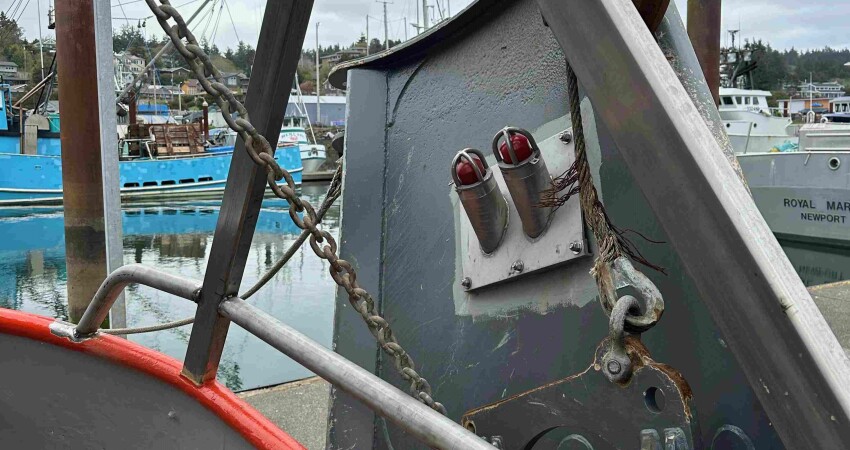For over a century of trawling in North America, captains and crews watched their nets sink below the surface and, from that moment on, had to imagine what their gear was doing. They learned by measuring wire spread at the stern, examining the polish on doors and sweeps, and building pictures in their mind from a few clues. Those with a knack for it caught more fish. Nobeltec and Notus Electronics have put together a package for TimeZero Pro version 5 that displays what it might have looked like in those captains’ minds, except that what the user sees is very real and in real-time.
“The Trawl Positioning feature is what fishermen have been asking for,” says Francis Parrott, marketing manager at Notus. “They want to see exactly where their net is.” Nobeltec had initially developed this capability with other net sensor manufacturers but opted to expand its accessibility. “Notus fits the bill perfectly for this integration,” says Parrott. “We are the only game in town that gives you a range within half a meter. These ranges are the trawl wire lengths measured acoustically.” Parrott adds that range is a critical component in determining net location. “You need to bring in three pieces of information to know where your net is: the door spread, the trawl depth, and the range. Our system has a two-way transponder. The transponder and receiver are talking to each other in real-time, and that’s what you need if you want a high level of accuracy in determining the range.”
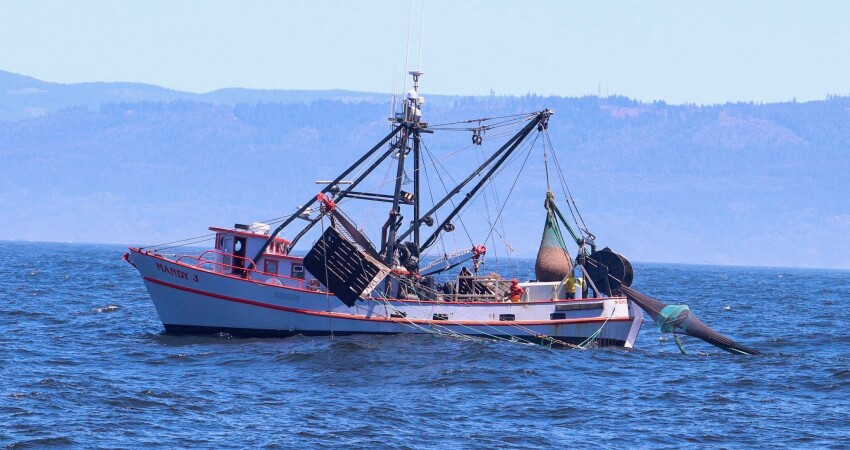
According to Parrott, TimeZero trawl positioning software takes the information from the Notus sensors and renders an image on the TZ chart by calculating currents and other factors. “We tested it with Riley Holt on the Mandy J. out of Newport, Oregon, bottom trawling, and he was quite pleased with it,” says Parrott. “It showed the trawl right where he thought it was.”
Seeing the net's position in real-time gives fishermen new options. “I hate to say it because it’s a buzz word, but this really is tactical fishing,” says Parrott. Our shrimp here aren’t doing as well as they have, but the redfish biomass is 4 million metric tons. So, if a fisherman sees a spot of redfish under the boat and the net’s a kilometer back, he can adjust his tow to hit that.
Parrott notes that the technology also allows fishermen to operate more safely around hangs and other obstructions. “And, you know, if they’re towing along the side of a bank, they can stay right on the edge. If they get on top, there’s going to be nothing, and if they get too low, it's the same thing. They can keep the net right where the fish are.”
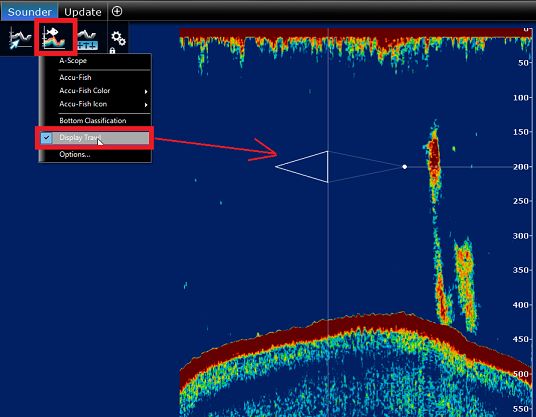
“I started using TZ years ago,” says Holt. The new trawl visualization is pretty handy when you want to trawl through hangs. You can transpose it onto the down sounder so you can see the net going into a ball of rockfish.”
Holt notes that the trawl positioning integration takes the guesswork out of determining where his doors and trawl are. “Especially when turning,” he says. “I do a lot of perch fishing,” adds Holt, who uses NETS 12 ½-meter midwater doors. “With this, I can get the net off the bottom, so I don’t catch what I don’t want to.”
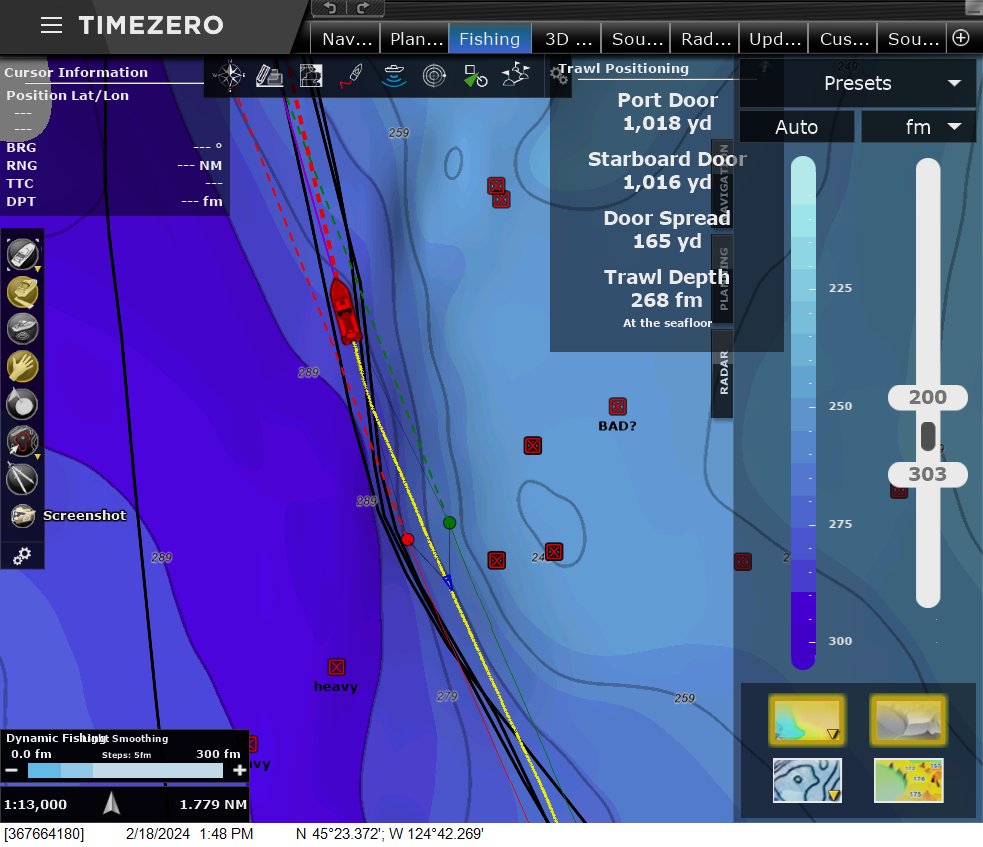
While Holt was happy overall when trying out the system on the 72-foot, Mandy J. Parrot notes that there were some software glitches. “But we were able to support him remotely from here,” says Parrott, speaking from Notus headquarters in Newfoundland, Canada.
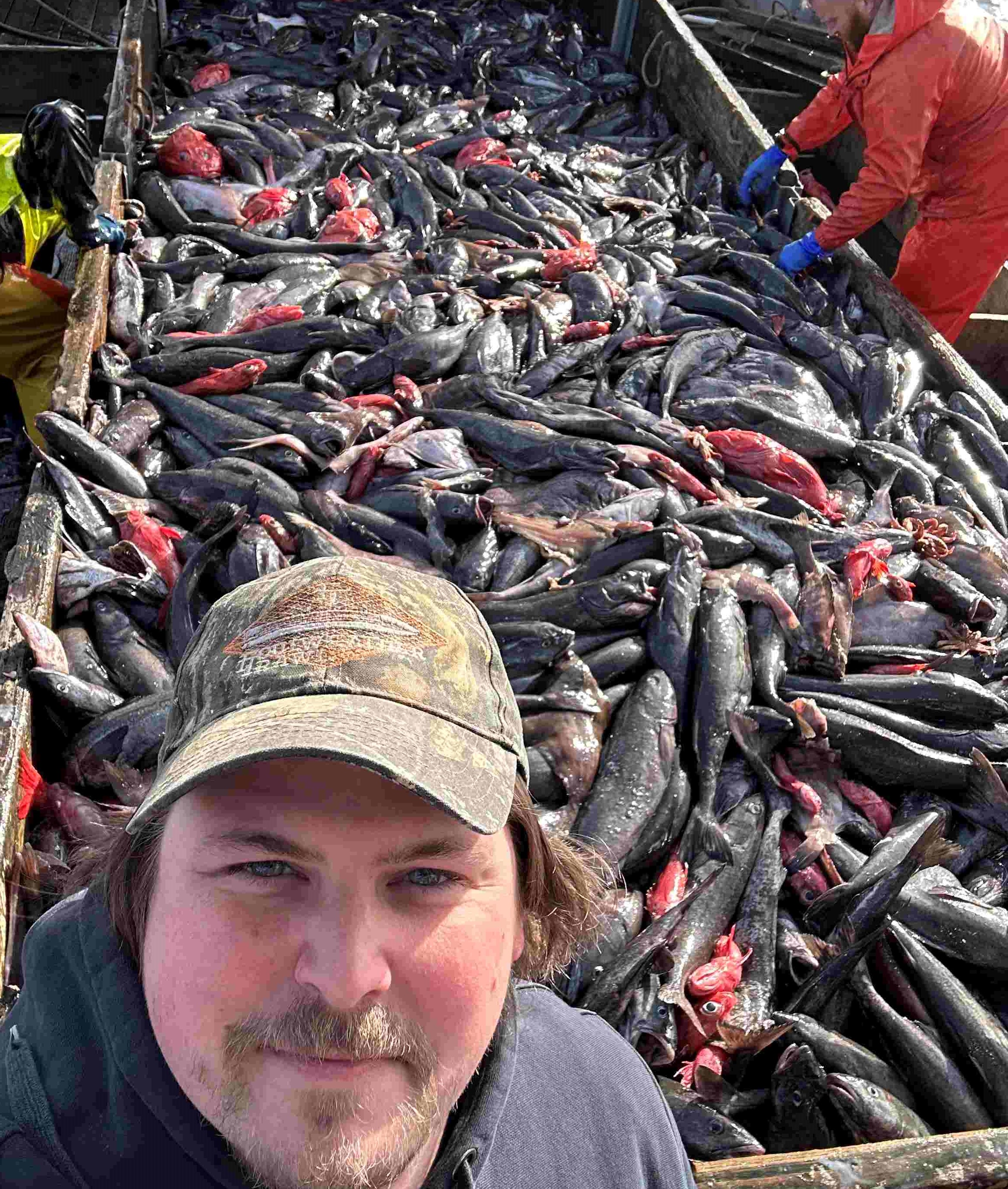
Although the Notus trawl sensors all look similar, Parrott recommends the Trawlmaster 3.3, which is most compatible with the new TimeZero Pro.
Somewhere off the coast of Washington State, Nobeltec’s Daniel Joram talks about the rationale behind teaming up with Notus. “We wanted to make this available to more users, so we opened up the protocols to accept different brands of sensors,” says Joram. “We also added a manual mode so that if you don’t have all the sensors, you can switch to manual mode and still get an idea of where your net is. Then the more sensors you get, the more positioning we can do, and you can build to the level you want.”
According to the TimeZero user manual, the program continuously records the position of the doors, displays the trails of the doors, and allows the user to replay the net position together with the boat. The trawl positioning program works only for single-trawls and handles a port and a starboard door. To visualize the net position behind the doors, the user can manually enter the net with characteristics such as spread and length.
When the Notus system is configured, the Trawl Positioning NavData will allow you to monitor the two-door wire length and the door spread values. However, since those values are sent by the Notus system, you cannot manually adjust them. You can only adjust the Trawl Depth.
According to Joram, Nobeltec started working with Notus on the Notus Shrimp Echo sensor and then moved into developing the trawl positioning system. “Notus is the most popular sensor in the U.S. and Spain, so it made sense to work with them,” says Joram. “Another thing we can do with Notus is display the net position on the sounder. So, if you have a good catch in a certain spot, you can scroll back to the spot and time and geo-locate it on your chart.” That capability requires a Furuno Ethernet sounder.
In addition, fishermen can add information regarding currents at three different depths. “Furuno has a Doppler current indicator in some of its sounders,” says Joram. “And we can feed that information into the system to calculate where the net is.” The system can work with the Furuno CI-68 or CI-88 current indicators, tracking the currents at three to five depths.
Joram lists the system's advantages, starting with bycatch reduction, particularly in pelagic trawling. “Obviously, if you know where your net is, and you see something you don’t want, you can maneuver around it. You can also keep the net off the bottom and avoid hanging so you have less derelict gear on the bottom.”
For fishermen who must work near subsea cables, Joram points out that the new version of TimeZero will enable them to do so more safely. “We have 18 or 20 subsea fiberoptic cables off Oregon, so the more information you have about where your net is, the easier it is to avoid an obstruction or fish closer to it,” he says.
Like Parrott at Notus, Joram can troubleshoot systems remotely. “We put their screen on team viewer, and I can resolve a problem sometimes in as little as 15 minutes. A couple of weeks ago, there was a trawler, and their computer was down, and I could help them from my desk, whereas before, you’d have to drive to the boat, and you’d be gone all day.”
As technology’s potential increases, so does its complexity. Joram explains how the systems use proprietary NMEA sentences to link the Notus sensors and computers to TimeZero Pro. “There are no low-tech jobs in fisheries anymore,” he says.





